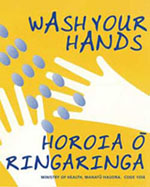|
 |
 |
|
The focus of this chapter is on personal health and physical development, and includes understandings about personal identity and self-worth. Students are expected to be developing their abilities to meet their health and physical activity needs, and learning about influences on their well-being and strategies for safe and healthy living.
Sixteen tasks were identical for year 4 and year 8 students, one was administered in different forms to students in both years, one was administered only to year 4 students and three were administered only to year 8 students. Ten are trend tasks (fully described with data for both 2002 and 2006), three are released tasks (fully described with data for 2006 only) and nine are link tasks (to be used again in 2010, so only partially described here).
The tasks are presented in the three sections: trend tasks, then released tasks and finally link tasks. Within each section, tasks administered to both year 4 and year 8 students are presented first, followed by tasks administered only to year 4 students and then tasks administered only to year 8 students.
Averaged across 170 task components administered to both year 4 and year 8 students, nine percent more year 8 than year 4 students succeeded with these components. Year 8 students performed better on 78 percent of the components.
Trend analyses showed no meaningful change since 2002 for year 4 or year 8 students. Averaged across 42 task components attempted by year 4 students in both years, two percent more students succeeded in 2006 than in 2002. Gains occurred on 17 components and losses on 20 components, with no change on five components. At year 8 level, with 79 task components included in the analysis, one percent more students on average succeeded with the task components in 2006 than in 2002. Gains occurred on 35 components, with losses on 35 components and no change on nine components.
Students’ responses suggested quite strong awareness of some health and safety issues and messages. What was also evident, however, was that this awareness was often rather one-dimensional: having identified one or two key points, students had little to say about other important points. For instance, they emphasised physical heath and largely ignored social, emotional and spiritual health. Similarly, a major focus as a cause of infection was sharing drink bottles, with less focus on transfer through other body contact. More than half of year 4 students thought students in wheelchairs should have their own schools.
|
